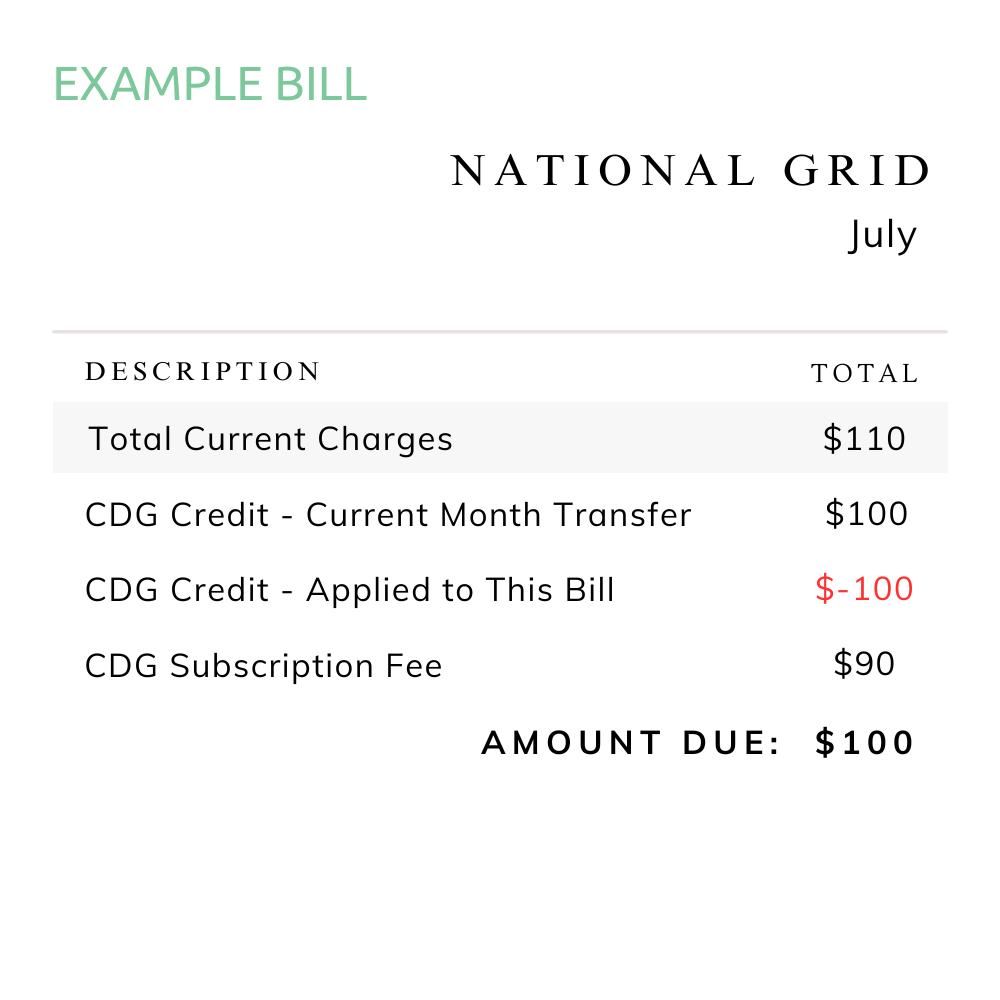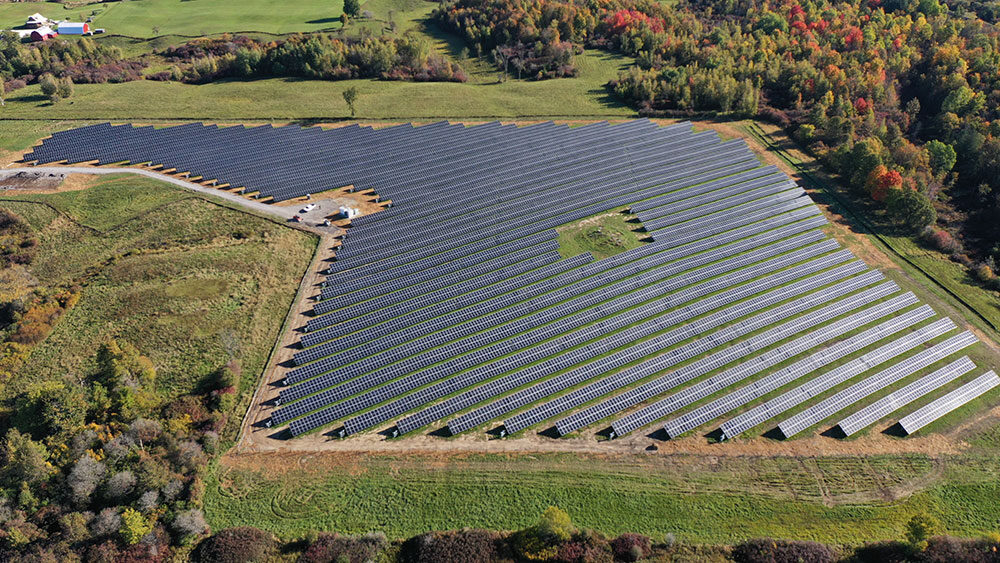A Complete Guide to Community Solar

PureSky Energy Answers All Your Questions about Community Solar
Our community solar guide is meant to be a valuable resource for people or organizations interested in participating in community solar programs or have questions about their existing program.
In the below guide, you’ll find a comprehensive overview of what community solar is, how it works, and what benefits it offers to participants and the surrounding local communities. We also include step-by-step instructions on how to join a community solar program, understand your utility bill savings, and other reward programs we offer.
The end goals of this guide are twofold. One, it’s here to help you make an informed decision on whether to join a community solar program. The second is to help you understand the ins and outs of community solar.
Contents
How Does Community Solar Work?
What Are the Benefits of Community Solar?
How Do I Sign up to Community Solar?
The Basics of Community Solar
What is Community Solar?
Community solar is a subscription program designed to expand access to solar and remove barriers to transitioning to clean energy. Unlike traditional rooftop solar systems, customers don't need to install solar panels on their property. Customers, also known as subscribers, sign up to receive a portion of the solar energy produced and receive credits on their electricity bill for the power generated by their share.
Community solar programs are regulated by the state and have slightly different rules and options for participating. Currently, community solar is available to some extent in more than 20 states.
The Key Takeaways:
- Community Solar is a subscription program available to some extent in more than 20 states (with more jumping on the train!)
- Subscribers join a local ‘solar farm,’ located in an ideal place to generate electricity, which allows renters, homeowners, businesses, schools, and anyone in the community to have access to solar power without installing solar panels

How Does Community Solar Work?
As mentioned above, the main feature of community solar is that is does not require customers to install solar on their property, whether on their roof or on their land. Instead, a company, organization, or group of individuals installs a large solar farm in an ideal place for generating electricity. Typically, that would be on flat land and near electricity infrastructure that can handle the large amount of electricity it generates. That last point is important because the electricity it generates goes directly into the local grid and is managed by the local utility.
Electricity from community solar programs is already part of the mix customers use every day, but they may not be aware of where it comes from. If they choose to sign up to a community solar program, they are simply getting the benefits of a program that is already in place and supporting their state’s goals to transition to clean energy sources.
Community solar customers support the development of solar energy through a crediting system. They sign up to receive a share of a community solar project, usually sized to be close to the amount of electricity they use. On their bill, they receive credits for their share of the project, less a discount. What they pay in credits goes to the solar company or organization to pay for the electricity they produce.
What is often confusing for many people is the fact that they still receive electricity from their utility as before. That is by design to make it more cost-efficient to build and share the benefits.
Key Takeaways:
- Community solar farms are built on ideal locations for generating electricity from the sun.
- Clean energy from community solar programs feed directly into the grid.
- Customers can support clean energy development by subscribing to community solar.
What are the Benefits of Community Solar?
The benefits of community solar occur on many levels from the individual household to the local area to the more general and broader societal level.
No Cost to Participate
Community solar removes barriers to participating in renewable energy. There is no cost to participate and it's easy to drop out of the program if you change your mind. There are no installation, upfront costs, hidden fees, or cancellation fees.
Savings on Electricity
Customers receive up to 10% saving on their electricity bill each month.
Increased Tax Revenue
Local municipality, schools, and other public institutions have the added benefit of taxes from solar projects.
Improving the Resilience of the Power Grid
With more distributed renewable energy power plants throughout the grid and the addition of batteries, we are better able to prevent widespread outages from failings in the infrastructure, weather events, or other catastrophic events.
Supporting the Development of Local Renewable Energy
Renewable energy is the key to halting climate change and preventing the global impacts of increasing temperatures.
How Do I Sign up to Community Solar?
The first step is to confirm if there is a community solar program available in your area. Not every city and state currently offer community solar (though we are actively working to change this).
You can use our tool online to check availability. If there is none in your area, you can still use the form to send us your information, and as soon as one is available, we will reach out to see if you are still interested.
Renters, homeowners, businesses, and municipalities are eligible to participate.
Steps to Sign Up to Community Solar
1. Fill out our Check Availability Form.
2. Sign the Community Solar Agreement.
3. Start Saving.
Estimate your savings. What's your average monthly electric bill?
Monthly Average Bill: $ 0.00
Annual kWh: 0.00
Annual Savings: $ 0.00
Greenhouse Gas Equivalencies: 0.00
Pounds of Coal Burned: 0.00
Gallons of Gas: 0.00
How Does Billing Work?
There are two types of billing for community solar: Utility Consolidated Billing (one bill) and Non-Utility Consolidated Billing (dual billing). With the one bill model, you will see the credits, discount, and the bill for community solar applied directly to your utility bill.
In dual-billing, you will receive two electricity bills. One bill from your utility provider, and one from PureSky Energy. The utility provider will bill you for the electricity you use, minus the solar credits from your solar farm share. PureSky Energy will bill you for the cost of your solar credits, minus the discount.

One Bill or Utility Consolidated Billing
In the single-bill system, the credits and the discount will be applied directly to your utility bill.
The example, simplified bill shows how the credits are applied and deducted from your bill. You then pay what's called a "subscription fee," which is the cost of your credits minus the discount.
Two Bill or Non-Utility Consolidated Billing
Community solar subscribers in the two-bill system will receive two bills.
The first bill comes from the utility as in the National Grid example bill below. Here you only pay the difference between what you owe the utility and the credits.

Then you receive a second bill from PureSky Energy with your share of the community solar farm and the discount.

Key Takeaways
- There are two types of billing: Utility Consolidated Billing (UBC) and Non-Utility Consolidated Billing (Non-UBC)
- UBC or one bill: a 10% discount is applied directly to your bill
- Non-UBC: get a bill from utility and PSE, the utility carrier bills for the electricity you use minus the solar credits from your solar farm share
Continue to receive a bill from the utility provider
What Is a Solar Farm?
Solar farms are the backbone of any community solar program, and may be also referred to as solar gardens, photovoltaics, power stations, or arrays. They are essentially power plants that generate electricity from the sun and are typically located on a rather flat field in rural areas, giving rise to the name, ‘solar farm’.
Solar Farms Are Deliberately Hidden from View
If you have driven by a large field with rows of solar panels on steel poles, you may have caught a glimpse of a solar farm but typically they are deliberately hidden from view through plants or other natural features.
Many solar companies choose to plant pollinator-friendly and indigenous vegetation underneath and around the panels to promote the health of the surrounding ecosystem. Care is also taken to protect waterways and other critical environments.
Lately, the use of sheep or the use of sheep or other agricultural animals to manage vegetation naturally is becoming more common, as solar developers seek ways to build solar sustainably, and in harmony with the surrounding environment.





